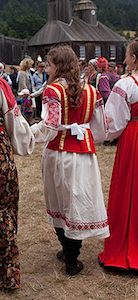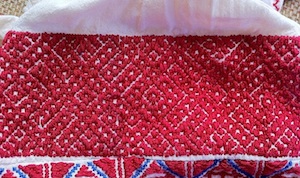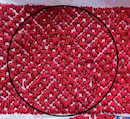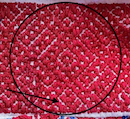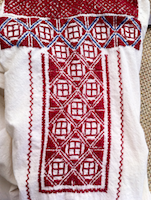
Outfits >>> Replicas >>> Belorussian Girl's Outfit | ||||||||||||||
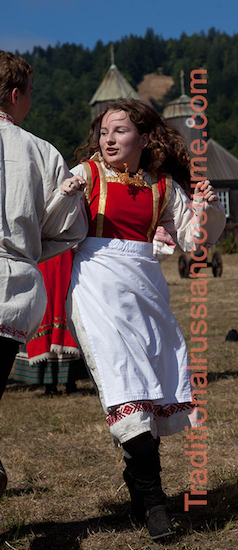
|
| |||||||||||||
|
The original of this work belongs to a collection of Russia State Museum of Ethnography (Saint-Petersburg). We made an exact copy of the cut and style of an authentic outfit, but used new fabrics, for sure.
There was no waistband with an authentic costume. We don't know why, but we guess that ties of an apron substituted a belt, and carried out its magical role. Embroidery embellished shirt's shoulders, sleeves and hemline was copied precisely from the museum original. Being important from a ritual point of view, paliki (shoulder details) and a hemline are embroidered with ancient "magical" symbols. At the same time, a sleeve's body is covered with a decorative design, which demonstrates a wearer's proficiency as an embroiderer. Needlepoint decorated paliki is made using an ancient technique named nabor (weaving stitch). There are two symbols drawn by thin white lines on a red base: Krada (a sacred fire, actually - a sacrifice to male gods of a Slavic pagan pantheon), and Horned Mothers. So, the whole composition means "Harmony and unity of male and female energies".
A hemline pattern is made using nabor also. There are two possible translations of this pattern.
1) Another version of "Harmony of male and female energies". A diamond ("a seeded grain field") symbolizes Mother Earth and motherhood. By sides of a diamond, there are slightly distorted Kradas (a male symbol, as we know now).
| ||||||||||||||
| ||||||||||||||
